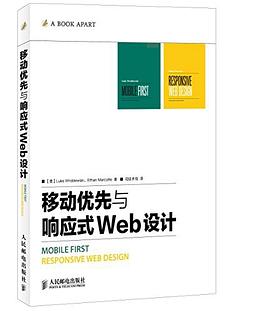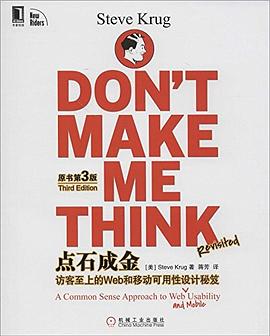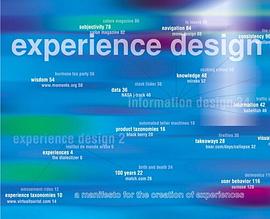

具體描述
Joshua Porter 網頁設計師、設計顧問、博客寫手,從事網站製作十餘年。他創辦的Bokardo設計公司專注於界麵設計、社會化網站及應用設計。他維護著廣受歡迎的博客網站Bokardo.com。
鄺宇恒 1998年開始成為網蟲的80後,熱愛互聯網,愛摺騰,愛分享。好聊天:跟搞技術的聊産品,跟搞産品的聊技術。早期中山大學逸仙時空BBS技術站長,曾在百度任職工程師,經曆百度搜藏、空間等産品。目前供職於騰訊公司,主打QQ郵箱。總之,geek一枚。更常被人所知的名字是布丁。
No matter what type of web site or application you’re building, social interaction among the people who use it will be key to its success. They will talk about it, invite their friends, complain, sing its high praises, and dissect it in countless ways. With the right design strategy you can use this social interaction to get people signing up, coming back regularly, and bringing others into the fold. With tons of examples from real-world interfaces and a touch of the underlying social psychology theory, Joshua Porter shows you how to design your next great social web application.
Inside, you’ll discover:
• The real reasons why people participate online and the psychology behind them
• The Usage Lifecycle—or how people use your web application over time
• How to get people past that trickiest of hurdles: sign-up
• What to do when you’ve launched a web application and nobody is using it
• How to analyze the effectiveness of your application screens and flows
• How to grow your social web application from zero users to 1000—and beyond
Designing for the social web is about much more than adding features. It’s about embracing the social interaction of the people who make you successful—and then designing smartly to encourage it.
用戶評價
##本書的原版內容很好,也比較好操作。翻譯版讀起來也很流暢,也像那麼迴事,但是譯者為瞭求“雅”,雕琢過多,雖然讀起來也很流暢,但和原文對比起來,在許多地方意義大不相同。失去瞭“信”再雅又有什麼用呢? 有時間的建議看原文,用google翻譯看也行。不過最好先瀏覽一遍中文...
評分 評分 評分 評分 評分相關圖書
本站所有內容均為互聯網搜尋引擎提供的公開搜索信息,本站不存儲任何數據與內容,任何內容與數據均與本站無關,如有需要請聯繫相關搜索引擎包括但不限於百度,google,bing,sogou 等
© 2025 book.qciss.net All Rights Reserved. 圖書大百科 版權所有




















